You’re probably spending $240 per year on ChatGPT Plus. Another $588 on Jasper AI. Add Canva Pro at $180. That’s over $1,000 before you count Grammarly Premium, Notion AI, or Midjourney. AI tool subscriptions add up fast.
Most people use only 20% of premium features but pay 100% of the cost. Free alternatives have caught up in quality. You don’t need to keep bleeding money on premium AI tools that you barely use. This guide shows you exactly which subscriptions to cancel and what free alternatives actually work just as well.
Which seven premium AI tools are completely replaceable, the best free alternatives for each one, and how much money you’ll save (hint: it’s nearly $2,000 per year). We’ll compare features side by side and tell you honestly when premium might actually be worth it. Let’s save you some serious money on AI subscription costs.
1. ChatGPT Plus

Spending $240 per year on ChatGPT Plus feels expensive. And here’s the thing: most people don’t actually need it. ChatGPT Plus costs $20 every month. That adds up fast. You get access to GPT-4o, which handles complex tasks better than the free version.
Plus subscribers also get Advanced Data Analysis, plugins for extra features, and web browsing to pull current information. If you’re using AI for basic writing, research, or everyday questions, the free version does the job just fine.
What Free ChatGPT Alternatives Give You

The free ChatGPT version now includes GPT-4o mini. It writes well, answers questions accurately, and handles most tasks you’d throw at it. You just hit usage limits during busy times.
Claude Free offers similar capabilities. It excels at longer conversations and understands context really well. Many users say it writes in a more natural style than ChatGPT. You can use it without paying a dime.
Google’s Gemini comes free, too. It connects to Google’s search engine, so it pulls current information automatically. That’s useful when you need facts about recent events or breaking news.
Meta AI built into Facebook and Instagram provides another free AI chatbot option. It’s right there in your social apps. No separate account needed.
The Search-Powered Alternative

Perplexity’s free version stands out because it cites sources. Ask a question, and it searches the web, then shows you where the information came from. This matters when you need to verify facts or find sources. You get GPT-4 free access through Perplexity’s interface, too.
Who Actually Needs the Paid Version?

You might need ChatGPT Plus if you use AI all day for work. Power users hit the free tier limits quickly. The paid version also processes requests faster during peak hours. But most people use AI a few times per day. They write emails, brainstorm ideas, or get quick answers. Free tools handle these tasks without problems.
2. Grammarly Premium
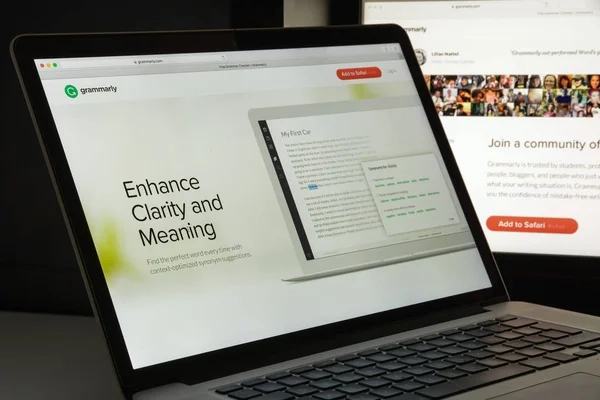
You’re staring at a Grammarly Premium subscription page. $144 per year. That’s a lot of money just to catch typos and comma mistakes. Free grammar checker tools catch about 90% of the errors that premium versions find. The other 10%? Most of them don’t matter for everyday writing.
What Grammarly Premium Actually Costs

Grammarly Premium runs $144 annually. You get advanced grammar checking, style suggestions, and plagiarism detection. They also throw in 100 AI prompts per month now. But you probably don’t need all that. Most people just want to fix spelling mistakes and awkward sentences.
The Free Writing Tools That Actually Work

ProWritingAid gives you almost everything Grammarly does. The free version checks grammar, finds weak words, and spots repeated phrases. If you write blog posts or articles, ProWritingAid’s style reports dig deeper than Grammarly does. It shows you sentence length patterns, overused words, and readability scores all in one place.
The paid version costs less than Grammarly, too. But start with the free tier. It handles most writing projects without making you open your wallet.
QuillBot works differently. It focuses on paraphrasing and rewriting. You get unlimited daily use, but each paraphrase caps at 125 words. That’s enough to rework a paragraph or clean up a rough sentence. QuillBot includes a grammar checker free in the same tool. Two features for zero dollars.
Hemingway Editor keeps things simple. Paste your writing in, and it highlights complex sentences, passive voice, and hard-to-read sections. The free web version does everything you need to make your writing clearer. No account required. Just open the site and start editing.
What About AI-Powered Rewriting?

Wordtune gives you 10 free rewrites per day. That’s enough to fix your trickiest sentences without overthinking them. It suggests different ways to phrase things, making your writing sound more natural. The free Grammarly alternative landscape continues to improve. These tools compete by offering solid features at no cost.
When Free Tools Fall Short

Free versions have limits. You’ll see prompts to upgrade. Some features stay locked behind paywalls. ProWritingAid limits how many words you can check at once in the free version. QuillBot makes you paraphrase in small chunks. Wordtune runs out after 10 rewrites. These limits push you to edit more carefully. You think about each change instead of just clicking accept all.
Should You Ever Pay for Grammarly?

If you write professionally every single day, maybe. Grammarly Premium works smoothly across all your apps. It catches errors in emails, Google Docs, and social media posts automatically.
For everyone else? Try the free grammar checker options first. Use them for a month. See what you actually need versus what sounds nice in a feature list. Most people discover they write better with free tools than they did without any help at all. Save your $144. Spend it on something that actually matters.
3. Jasper AI

Jasper AI wants $49 every month for their Creator plan. That’s $588 per year just to write blog posts and social media captions faster. The Boss Mode plan costs even more. $119 monthly. Over $1,400 annually. That’s a mortgage payment in some places.
Most freelancers and small business owners don’t need to spend that kind of money on AI writing tools. Free content creation tools have rapidly caught up.
What You Actually Get With Jasper

Jasper creates blog posts, ads, emails, and social media content. It uses templates to speed up the writing process. You pick a format, fill in details, and it generates copy. But here’s the reality: other AI tools do the same thing without charging hundreds of dollars.
The Free Jasper Alternative That Works

Rytr gives you a genuinely useful free plan. You get a set number of characters per month at no cost. That’s enough for several blog posts or dozens of social media captions. Rytr includes over 40 pre-designed templates.
Product descriptions, blog intros, email subject lines, Facebook ads. The formats you actually use. It writes in over 30 languages, too, which beats most paid tools. The free tier has limits. But test it first before assuming you need to pay.
ChatGPT Handles Content Creation Too

ChatGPT free works for most writing tasks. Give it a prompt like write a product description for eco-friendly water bottles and it delivers solid copy. You might need to edit a bit, but you’d edit Jasper’s output too. ChatGPT doesn’t have fancy templates. You just tell it what you need in plain English. That’s actually easier once you get used to it.
Copy.ai’s Free Plan Surprises People

Copy.ai offers 2,000 words per month free. That sounds small, but think about it. Most social media posts use 50-150 words. Email subject lines use 5-10 words. You can create a lot of content with 2,000 words.
The free plan includes all 90+ copywriting tools. Blog ideas, headline generators, product descriptions, and Instagram captions. Everything unlocked. Just capped by total words. If you write one or two blog posts monthly, Copy.ai’s free tier covers you completely.
The Honest Truth About AI Writing Tools

None of these tools writes perfect copy on the first try. You’ll always edit. You’ll rewrite sentences that sound robotic. You’ll add your own voice and personality. Jasper doesn’t magically create better first drafts than free tools. It just packages the same AI technology in a prettier interface with more hand-holding.
When Does Paying Actually Make Sense?

If you write 20+ blog posts monthly for clients, paid plans start making sense. The higher word limits save time. Built-in SEO tools help optimize content faster. But most people write a few pieces per week.
That fits easily within free tier limits across multiple tools. Use Rytr one week, Copy.ai the next. Save your $588. Put it toward something your business actually needs. Like better hosting or an email marketing tool that drives real sales.
4. Canva Pro
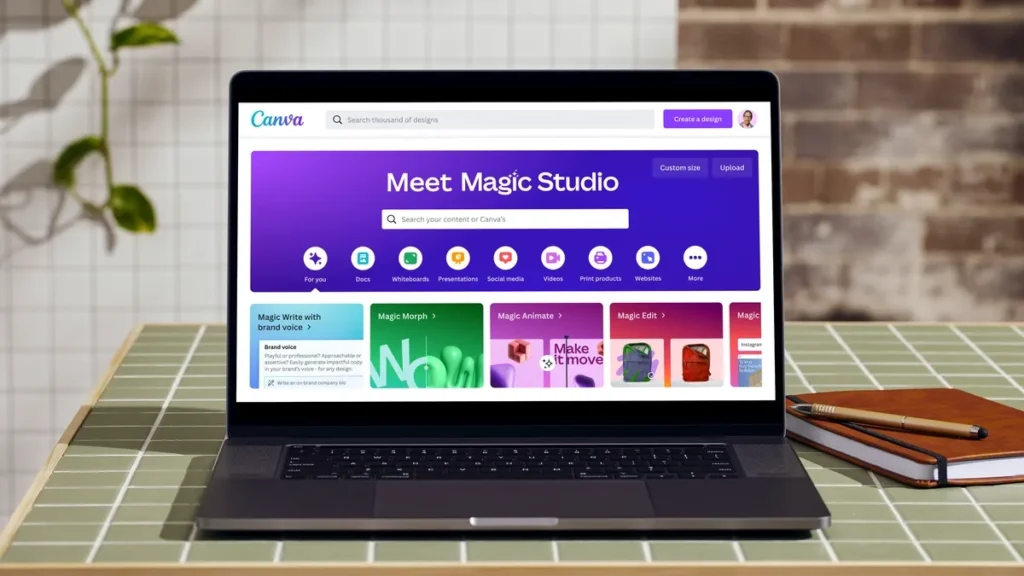
Canva Pro costs between $8.33 and $14.99 monthly. That’s $100 to $180 every year for design software you might use once or twice a week. You’re probably thinking: But I need professional-looking graphics for my business. You do. You just don’t need to pay Canva to get them.
Free design tools have exploded in quality over the past few years. They offer thousands of templates, stock photos, and features that used to cost money. And they work perfectly fine for social media posts, flyers, and basic marketing materials.
Adobe Express Gives You Premium Features Free

Adobe Express offers over 100,000 templates at no cost. Instagram stories, Facebook posts, YouTube thumbnails, business cards. All the formats you actually use. The free plan includes 10 Firefly AI credits monthly. That’s Adobe’s image generator.
Type what you want, and it creates custom graphics. You also get 5GB of storage for your projects. Adobe Express feels professional because it comes from Adobe. The same company behind Photoshop. But you don’t need Photoshop skills to use it.
VistaCreate Loads You Up With Templates

VistaCreate throws over 100,000 ready-made templates at you for free. That’s not a typo. One hundred thousand. You’ll find templates for every social media platform, print materials, and presentations. The drag-and-drop editor works just like Canva.
If you’ve used Canva before, you’ll figure out VistaCreate in about five minutes. This Canva alternative free option doesn’t lock basic features behind a paywall. You can resize designs, use layers, and add animations without upgrading.
Snappa Focuses on Speed and Stock Photos

Snappa includes access to over 5 million HD royalty-free images. You don’t need to hunt around other sites for photos. Everything you need sits right inside the editor. The free plan lets you download 3 designs per month.
That sounds limiting until you realize most people create a few social posts weekly, then reuse and modify them. Three downloads cover more than you’d think. If you need more, Snappa Pro costs $15 monthly. Still cheaper than Canva Pro. But try the free version first.
What You Actually Need From Design Tools

Most small business owners need free graphic design options for social media. A few Instagram posts. Maybe a Facebook ad. An email header. You don’t need advanced brand kit management or 100GB of storage.
Those features sound great in marketing emails, but you’ll never use them. Free design tools handle 90% of real-world needs. Custom fonts, basic animations, photo editing, and template customization all work without paying.
When Canva Pro Actually Makes Sense

If you manage social media for multiple clients, Canva Pro’s team features help. You can share brand kits and collaborate on designs easily. Content creators who post daily might hit free tier limits. Unlimited downloads become worth the money when you’re creating 20+ graphics weekly. But for most people, running a side business or personal brand? The free tools crush it.
Try Before You Buy Anything

Download Adobe Express, VistaCreate, and Snappa. Use each one for a week. See which interface feels natural to you. You’ll probably find that you don’t miss Canva Pro’s features at all. Save that $180. Invest it in ads to promote the designs you create for free.
5. Notion AI

Notion AI costs $10 per month per member. That’s $120 annually just for AI features in your notes. But here’s what they don’t tell you upfront: you’re already paying for the base Notion plan. Add it together, and the average user spends $17 per member monthly.
Over $200 per year for a note-taking app with AI. Most people use Notion AI to summarize meeting notes, generate quick drafts, and search through documents. None of that requires a $120 yearly subscription.
ChatGPT Works Across Every App

ChatGPT handles all the same tasks without being built into your notes. Copy your text, paste it into ChatGPT, and ask for a summary. Need to write something? Have ChatGPT draft it, then paste it back. Takes about 15 extra seconds. Saves you $120 annually.
The convenience of having AI inside Notion isn’t worth the subscription cost for most users. Opening a separate tab works fine.
Coda Combines Notes With Built-In Features

Coda’s free plan gives you up to 50 objects and 1,000 rows per document. That covers personal projects and small teamwork without hitting limits. Coda feels similar to Notion but offers more flexibility with tables and databases.
You can write docs, build databases, and organize projects in one workspace. This Notion AI alternative doesn’t charge extra fees for basic productivity tools. The note-taking AI features are included at no additional cost.
AppFlowy Strips Away the Complexity

AppFlowy is an open-source productivity tool that copies Notion’s design. You get boards, lists, calendars, and documents without the premium price. Everything is free. No upgrade prompts. No AI add-ons. Just solid note-taking that works.
AppFlowy stores data locally on your device instead of in the cloud. Your notes stay private and under your control. People who care about data security prefer this setup.
Anytype Keeps Everything on Your Devices

Anytype uses peer-to-peer technology. Your notes sync between your own devices without going through company servers. It mimics Notion’s functionality keeping you in full control of your data.
Create databases, write documents, and manage projects just like Notion lets you. The learning curve feels steeper than Notion. But if privacy matters and you want to avoid subscription fees, Anytype delivers solid results.
Saner AI Adds Smart Features Free

Saner AI offers a free plan with task reminders and natural language search. You can find notes by describing what you remember instead of searching exact keywords. The interface stays simple. No bloated features you’ll never use. Just smart organization that makes finding information easier.
Free Tools Give You 80% of the Features

Free alternatives provide about 80% of what Notion AI offers. You lose some seamless integration and a few convenience features. But you save $120 every year. For most people, that trade makes perfect sense. Try working without Notion AI for two weeks. Use ChatGPT in another tab when you need AI help. See if you actually miss the integrated features. Most people don’t.
6. Midjourney
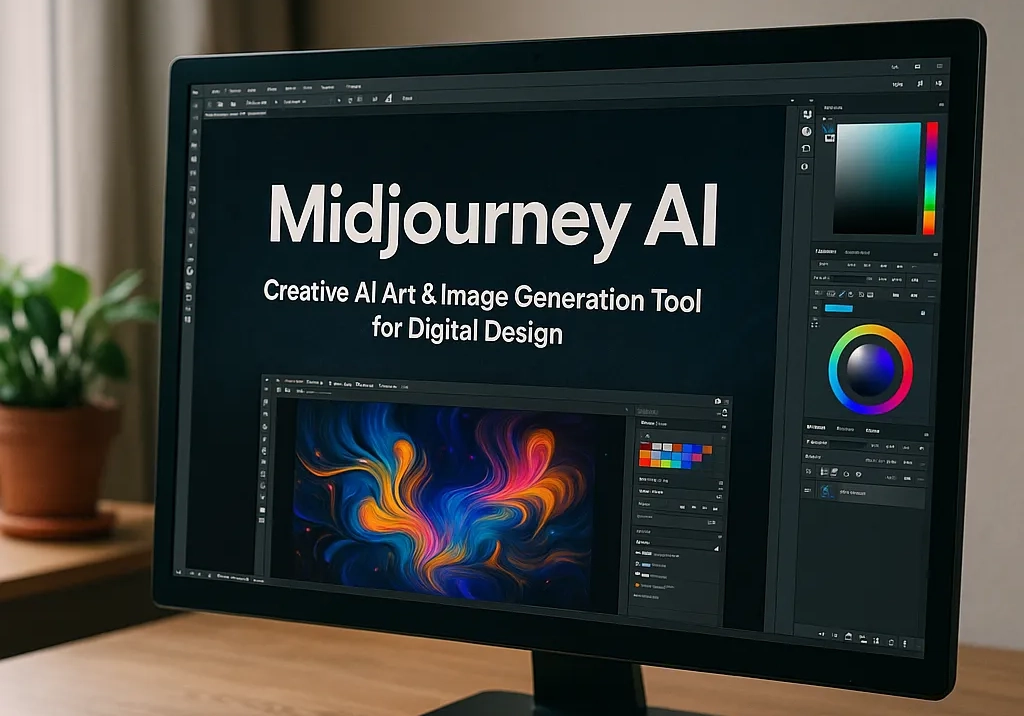
Midjourney’s Basic Plan costs $8 monthly. That’s $96 per year for limited image generation. Their Standard Plan jumps to $24 monthly. Pro hits $48. The Mega Plan reaches $96 per month. That’s over $1,100 annually just to create AI images. Most people don’t need to spend that kind of money. Free AI art generators have gotten scary good in the past year.
Google’s Imagen 3 Crushes Everything Else
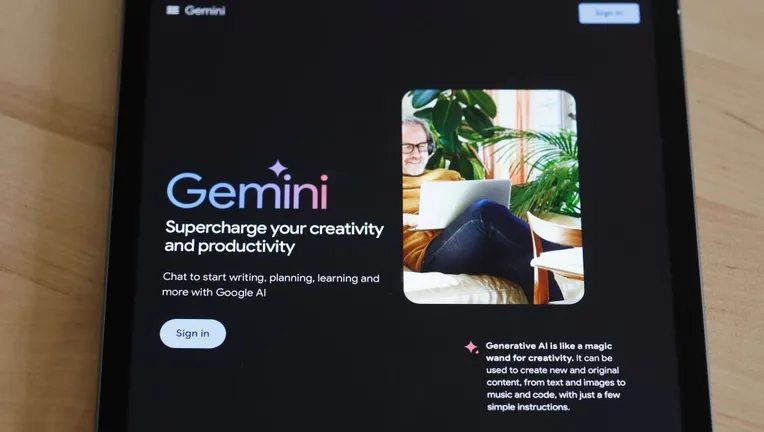
Google’s Imagen 3 is available free through Gemini. And it’s honestly the best Midjourney alternative free option right now. Imagen 3 generates images with realistic shadows, proper depth effects, and accurate facial features.
The lighting looks natural. The details pop. It handles text in images better than most paid tools. Just open Gemini, describe what you want, and watch it create professional-quality images.
DALL-E 3 Is Now Free for Everyone

DALL-E 3 used to require ChatGPT Plus. Not anymore. It’s now free for all ChatGPT users. The quality rivals Midjourney for most use cases. Product mockups, social media graphics, blog header images. DALL-E 3 handles them all without making you pay. You get daily limits on the free tier. But those limits reset every 24 hours. Most casual users never hit them.
Stable Diffusion Gives You Complete Control

Stable Diffusion is open-source. That means it’s completely free and you can run it on your own computer. The learning curve feels steeper than other tools. You’ll need to mess with settings and learn some technical terms.
But once you figure it out, you control everything about how images generate. Web versions like DreamStudio let you use Stable Diffusion without downloading anything. You get a certain number of free credits to start.
Adobe Firefly Offers Monthly Free Credits

Adobe Firefly gives you free credits each month. Not unlimited, but enough for regular use. The image quality looks professional because it comes from Adobe. The same people who make Photoshop built this AI art generator. Firefly excels at creating images that match specific styles. Want something that looks like a vintage poster or a modern 3D render? It nails the aesthetic.
Playground AI Lets You Create 50 Images Daily

Playground AI’s free plan gives you 50 images per day. That’s more than most people create in a week. The interface feels simple. Type your prompt, pick a style, and generate. You can edit images, remix them, and export without watermarks. Fifty daily images means you can experiment without worrying about running out. Try different prompts. Test various styles. See what works.
Ideogram Handles Text in Images

Ideogram offers a free plan with limited tokens. Each image costs tokens, and they refill over time. Where Ideogram shines: text inside images. Most AI generators mess up spelling and letter placement. Ideogram gets it right more often. Need a poster with actual, readable words? Ideogram handles it better than its competitors.
The Honest Truth About Free vs Paid

Midjourney creates beautiful, artistic images. It’s probably still the best for certain aesthetic styles. But free tools have closed the gap fast. For business use, social media posts, and general image creation AI needs, free options deliver professional results.
Try the free tools first. Create 20-30 images with each one. See which interface you prefer and which results match your needs. Most people discover they don’t need Midjourney at all. Save your $120 to $1,100. Use it for something your business actually needs.
7. Copy Ai
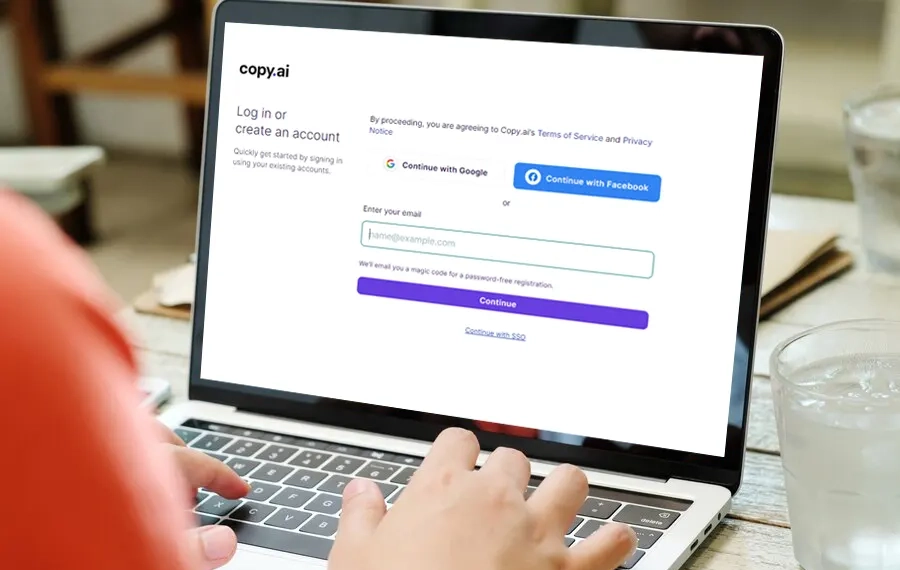
Copy.ai’s paid plan starts at $49 per month. That’s $588 every year for 40,000 words of AI-generated marketing copy. Most small businesses don’t write 40,000 words of copy monthly.
You might need a few product descriptions, some social media posts, and an occasional email. That’s maybe 2,000-5,000 words on a busy month. Paying $588 for something you barely use makes zero sense.
Rytr Gives You Free Copywriting Forever

Rytr offers a free forever plan with 10,000 characters per month. That covers several product descriptions, email sequences, or social media campaigns. The free copywriting AI includes templates for ads, blog posts, product descriptions, and email subject lines.
Everything works without a credit card. Need more? Rytr’s Unlimited plan costs just $7.50 monthly. That’s $90 per year instead of $588. You get unlimited characters and access to premium features. Even if you outgrow the free tier, Rytr costs a fraction of Copy.ai’s price.
ChatGPT Does the Same Job

ChatGPT handles most copywriting tasks without specialized tools. Ask it to write an email sequence, and it delivers solid drafts. Need product descriptions? Give it the details and watch it work. You lose the fancy templates and one-click workflows.
But you gain flexibility. ChatGPT adapts to any request instead of forcing you into preset formats. This marketing copy generator approach works especially well if you write copy in different styles for different clients. No template limitations.
Smart Copy by Unbounce Works for Landing Pages

Smart Copy offers a generous free plan with 40 monthly credits. Each credit generates one piece of copy. It focuses on conversion-focused writing. Landing page headlines, call-to-action buttons, value propositions.
The stuff that actually drives sales. If you build landing pages or run ads, Smart Copy understands what converts. The AI writes with persuasion in mind, not just word count.
Writesonic Gives You Options
Writesonic provides basic free plans and trials. You can test the platform before committing money. The free tier limits your word count, but it’s enough to see if the tool fits your workflow. If you like it, paid plans cost less than Copy.ai, offering similar features.
The Reality of AI Copywriting Costs

Copy.ai’s free version gives you 2,000 words monthly. That proves even Copy.ai knows most users don’t need much. If 2,000 words covers your needs, why pay $49 monthly for 40,000? Try the free Copy.ai alternative options first.
Use Rytr for templates, ChatGPT for flexibility, and Smart Copy for conversion-focused writing. Most people find that free tools handle everything they need. Save your $588. Spend it on ads to promote the copy you create for free.


